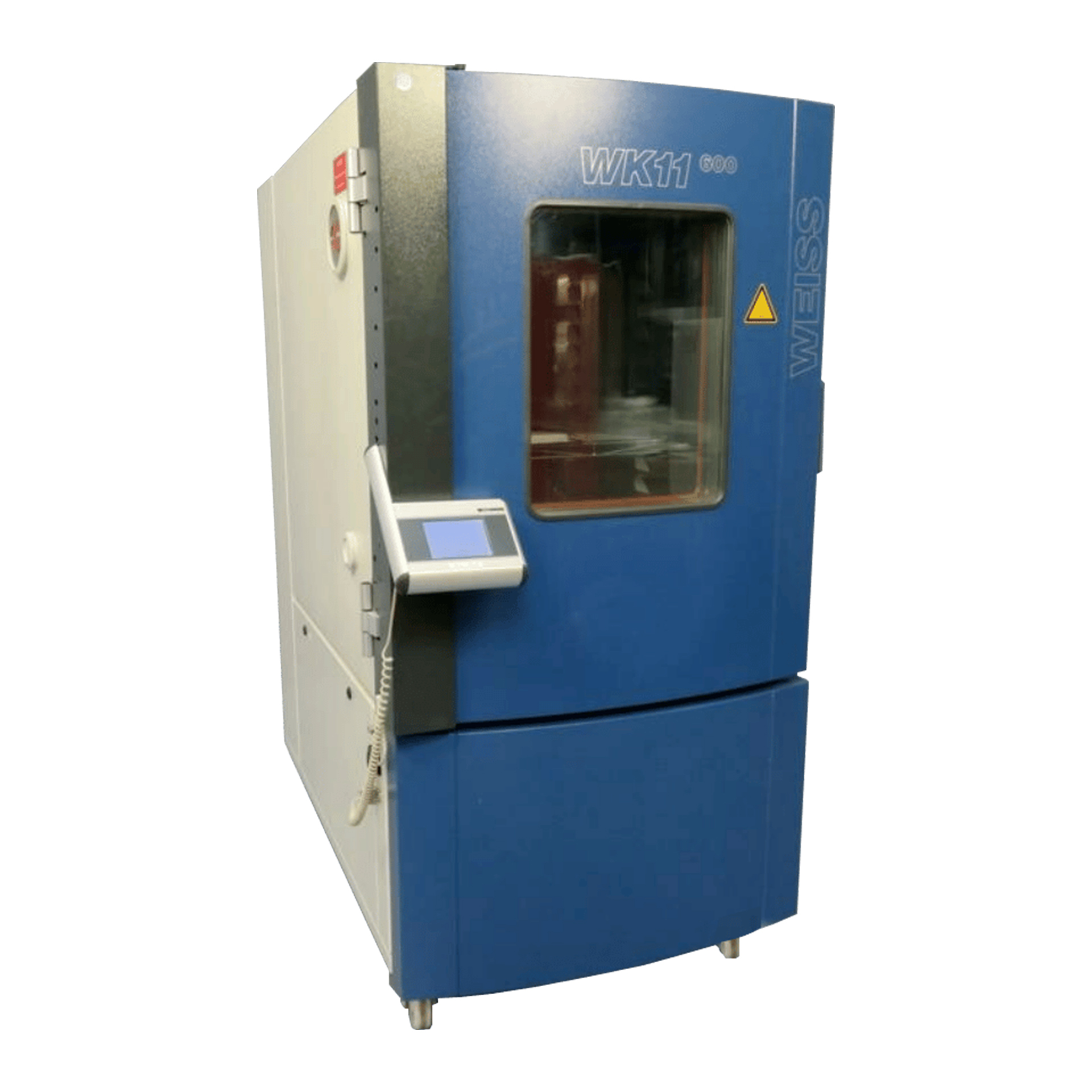
Thermal and Climatic Chamber Tests are testing procedures used to examine the resistance of various materials, products, and devices under extreme environmental conditions. These tests are particularly important in many industries, such as the automotive industry, electronics, construction, and
Types of Thermal and Climatic Chamber Tests:
1. Temperature Tests
-
- High-Temperature Tests (e.g., Material Heat Resistance)
- Low-Temperature Tests (e.g., Freeze Resistance)
- Temperature Cycling (Effect of Thermal Expansion and Contraction)
2. Humidity Tests
-
- Testing the Effects of High Humidity
- Testing in Condensation and Corrosive Environments
3. Combined Temperature and Humidity Testing
-
- Modeling Extreme Weather Conditions
- Aging Testing of Electronic and Mechanical Components
4. UV Radiation and Weather Resistance Testing
-
- Analysis of the Effects of Sunlight and Ultraviolet Radiation
- Testing of Material Discoloration and Structural Damage
5. Climatic Chamber Stress Tests
-
- Accelerated Aging Tests
- Extreme Temperature Fluctuations
Application Areas
- Automotive Industry: Weather resistance of plastic and metal components
- Electronics: Thermal behavior of circuits and semiconductors
- Construction Industry: Lifespan of paints, coatings, and insulation materials
- Pharmaceutical Industry: Active ingredient stability testing
The temperature chamber and climatic chamber tests aim to examine the resistance of various products and materials under extreme temperature and humidity conditions. These tests help determine the lifespan and reliability of components, materials, and devices under different environmental conditions.
1. Temperature Chamber Tests
During temperature chamber tests, components and products are subjected to extreme cold and hot temperature conditions to examine their behavior.
Typical Temperature Testing Procedures:
- High-Temperature Tests (+70°C to +180°C)
→ They check the heat resistance of materials and structural changes. - Low-Temperature Tests (-70°C to -40°C)
→ They examine brittleness and the tendency of materials to fracture. - Temperature Cycling (Thermal Shock Test)
→ Rapid temperature changes are used to model the materials' behavior during thermal expansion and contraction.
Applications
Automotive plastic and metal component testing
Electronic devices and circuit board inspection
Industrial equipment and material testing
2. Climatic Chamber Tests
In climatic chamber tests, in addition to temperature, the effects of humidity are also examined. This allows for the assessment of how resistant the product is to moisture and changes in weather conditions.
Typical Climatic Tests:
- Humidity Tests (10–98% relative humidity)
→ They check the effects of rust, condensation, and mold growth. - Combined Temperature and Humidity Tests
→ Products are tested under varying conditions (e.g., +85°C / 85% RH). - Accelerated Aging Tests
→ They model the aging and lifespan of materials under extreme conditions.
Application Areas:
Weather resistance of rubber and plastic components
Moisture tolerance of electronic devices
Durability testing of automotive interiors (dashboard, seats)
Why Are These Tests Important?
Product Quality Assurance: Manufacturers can verify whether their products meet the required standards.
Long-term Reliability: The durability of components and materials can be predicted in advance.
Modeling the Effects of Environmental Factors: Checking the performance of products exposed to weather and temperature fluctuations.
Here are some important standards and testing methods for temperature chamber and climatic chamber tests that are used in various industries, especially in the automotive and electronics sectors.
1. Temperature Testing Standards
Automotive Standards
ISO 16750-4 – Environmental testing of electrical and electronic components (temperature cycles, thermal shock, humidity)
VW TL 82383 – Volkswagen standard for temperature and humidity resistance testing of components
GMW 3172 – General Motors standard that includes temperature change and thermal cycling tests
Electronic Industry Standards
IEC 60068-2-1 (Test A) – Low temperature test (-70°C to -40°C)
IEC 60068-2-2 (Test B) – High temperature test (+70°C to +180°C)
IEC 60068-2-14 (Test N) – Temperature cycling tests
Aerospace and Military Standards
MIL-STD-810H (Method 501.7, 502.7) – High and low temperature testing for military equipment
RTCA DO-160 – Temperature and humidity testing for aerospace equipment
2. Climatic Chamber Testing Standards
Automotive Standards
ISO 16750-4 – Temperature and humidity variation tests
BMW GS 95024-3-1 – BMW standard for combined temperature and humidity tests
Electronic and Industrial Standards
IEC 60068-2-30 (Test Db) – High humidity cycling tests (e.g., 55°C / 95% RH)
IEC 60068-2-78 (Test Cab) – Long-term humidity test (e.g., 85°C / 85% RH)
ASTM D2247 – Moisture resistance tests for paints and coatings
3. Thermal Shock and Accelerated Aging Testing Standards
IEC 60068-2-14 (Test Na) – Thermal shock tests with rapid temperature changes
MIL-STD-810H (Method 503.7) – Thermal shock for military equipment
SAE J1455 – Accelerated aging of automotive electronic components
Commonly Used Testing Conditions
Temperature Cycles: -40°C ↔ +85°C, 30-minute cycle time
High Humidity Test: 85°C, 85% RH, 1000 hours
Thermal Shock Test: -40°C ↔ +125°C, 10-second transition time
These standards ensure that automotive, electronic, and other industrial components are resistant to extreme environmental conditions.
Phone Contact
+36 70 408 0134

